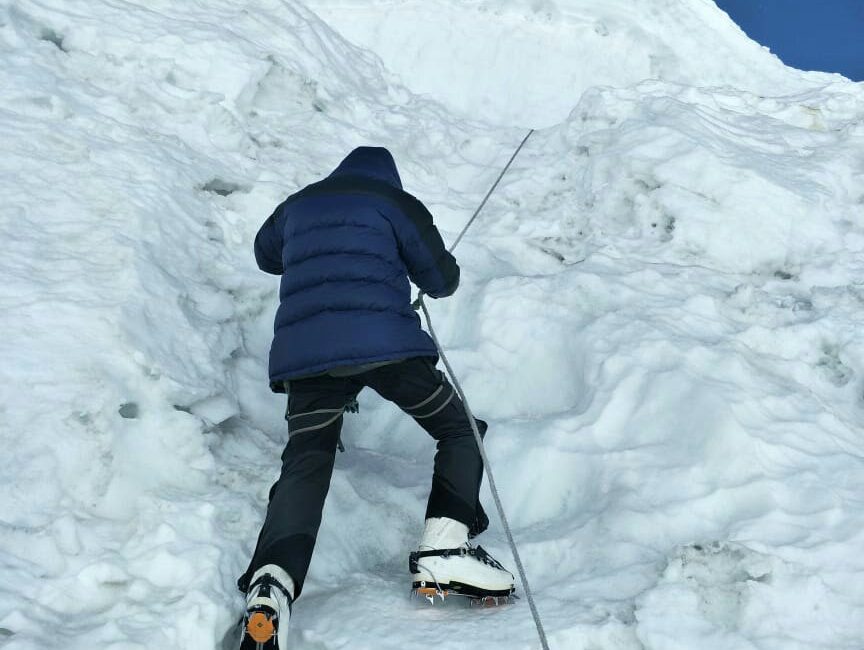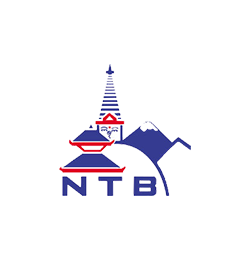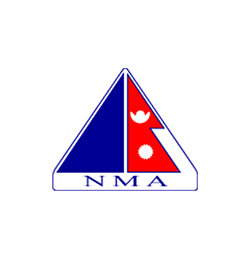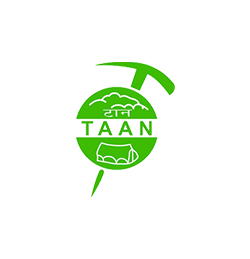
‘A mountaineering experience for beginners as well as veteran mountaineers’
Overviews
The top three trekking peaks of Nepal around the Everest Region, are the most popular and famous lesser mountains to climb.
An exciting way to start mountaineering activities, suitable for all types of people from teenage to elders. As well for expert mountaineers and climbers as practice exercise before planning major mountaineering expeditions.
Trekking peaks are under the rules and regulations of the NMA (Nepal Mountaineering Association), as well as the Department of Nepal Tourism.
Where all climbers need to join reliable local companies, registered with the Government of Nepal like White Hill Adventures.
In the top three trekking peaks of Nepal, we have highlighted only the peaks of Khumbu Valley around the Everest region. Some are moderate to adventurous grades and others like Lobuche East Peak are challenging with a technical climb.
An enjoyable adventure of great thrills, standing on top above 6,000 m peaks overlooking a stunning panorama of the surrounding mountain range.
One of the greatest feats, an overwhelming experience to gain, and worth the climb on top of these three trekking peaks. Where all climbers should have an expert local guide to accompany them throughout the climb for a safe and enjoyable climb.
The trekking peaks are located within a distance of a few days of trekking, whereas Mera Peak, is situated southeast of Khumbu.
Mera Peak Climbing
Short Profile:
Climbing Mode: Staying in the best available Lodges and tented camping and
climb to Mera Peak.
Trekking Grade: Moderate to Adventurous.
Climbing Grade: F (Facial Easy) From French / Swiss Alpine Climb Classification.
Activities: Exciting flights, scenic treks, and adventurous climbing.
Trek & Climb: 14 Nights and 15 Days with flights both ways.
Best Seasons: Spring from March to May, and autumn/fall from September to November. Interested climbers can trek and climb in winter times also. But much colder than other seasons, with short days, due to sunlight hours.
Mera Peak Climbing leads towards Hinku valley away from the main villages and towns of Khumbu and the Everest region. Mera Peak is well hidden from the rest of the main trekking trails, a trek of one week or more. Reaching Mera Peak base camp at the height of 5,045 m / 16,486 feet high.
The climb to Mera Peak at 6,461 m and 21,190 feet, is one of the highest trekking peaks in Nepal Himalaya. Depending upon the itinerary days, one can reach the summit from the base camp. Most climbers make an extra High Camp at 5,780 m / 18,958 feet, to make the climb safe and shorter.
The grade of Mera Climb is ‘F’ which means “Facial Easy” from the French and Swiss Alpine climbing classification. A straightforward climb to the summit, without any technical difficulties. However, all climbers should be well prepared and equipped with the right gear for the climb to the summit of Mera Peak.
Island Peak Climbing
Short Profile:
Trekking Mode: Staying in the best available Lodges and tented camping
and climb to Island Peak.
Trekking Grade: Moderate to Adventurous
Climbing Grade: PD + (Per Difficule) From French / Swiss Alpine Climb
Classification.
Activities: Exciting flights, scenic treks, and adventurous climbing.
Trek & Climb: 16 Nights and 17 Days Lukla to Lukla, flights both ways.
Best Seasons: Spring from March to May, and autumn/fall from
September to November. Interested climbers can trek and climb in winter times also. But much colder than other seasons, with short days, due to sunlight hours.
Island Peak climbing is one of the famous and popular trekking peaks of Nepal Located close to Mt. Everest, Lhotse, and Nuptse peaks at the height of 6,189 meters / 20,305 feet high.
Stands above beautiful Imja Tse Valley, the Island Peak is also called Imja Tse Himal, as listed in NMA trekking peaks. The Island Peak grade climb is ‘PD +‘, which means “Per Difficule” as per French and Swiss Alpine Climbing Classification Systems.
Island Peak is mostly climbed trekking peak of Nepal, due to its closeness to the Everest base camp trail. Making it much more accessible for the climb of Island Peak, with various options to get acclimatize before the climb.
One can reach Island Peak Base Camp, after the Everest base camp trek and climb of high Kalapathar scenic hill. The other possibilities visiting Gokyo Valley and crossing high Cho-La pass and walking to Island Peak base camp. The standard itinerary will be 16 nights and 17 days including a visit to Everest base camp.
Spent a few nights in tented camps for the climb, after staying overnight in a lodge at Chukung, a small settlement.
The climb to the summit of Island Peak is a straightforward climb, with some technical sections to tackle. From the summit, one can enjoy a dramatic panorama of surrounding giant snow peaks, overlooking Mt. Everest, Lhotse, and Nuptse.
Includes views of Ama Dablam North Face with Amphu Lapcha Himal as far to Makalu in the east. Island Peak climb of more than 90 % success rate, depending upon good favorable weather, as season-wise.
Lobuche Peak Climbing
Short Profile:
Trekking Mode: Staying in the best available Lodges and tented camping
and climb to Lobuche Peak.
Trekking Grade: Moderate to Adventurous.
Climbing Grade: TD (Technical Difficule) From French / Swiss Alpine Climb
Classification.
Activities: Exciting flights, scenic treks, and adventurous climbing.
Trek & Climb: 13 Nights and 14 Days from Lukla to Lukla with flights both
ways. Straight to Lobuche Peak and back to Lukla.
Best Seasons: Spring from March to May, and autumn/fall from September to November. Interested climbers can trek and climb in winter times also. But much colder than other seasons, with short days, due to sunlight hours.
Lobuche East Peak climb reaches you to the summit at above 6,119 meters and 11,287 feet high. Located on the high valley of Khumbu close on route to Everest base camp. The grade of Lobuche East Peak climb is ‘TD’ which means “Technical Difficulties”. But possible to climb the summit of Lobuche Peak, after a good acclimatization day, having rest for practice climb.
A majestic-looking peak, the climb from base camp and high camp leads to a sheer vertical rock and ice section. The climb is mostly done from the southwest face of Lobuche peak. From the summit, one can enjoy alluring views of the snow-mountain range with the closest views of Mt. Everest towards the east.
At present Lobuche Peak, gets more climbers due to its close location to the main trail of Everest base camp. As well as its technical climb, which allows climbers much experience in mountaineering, before planning major expeditions.






